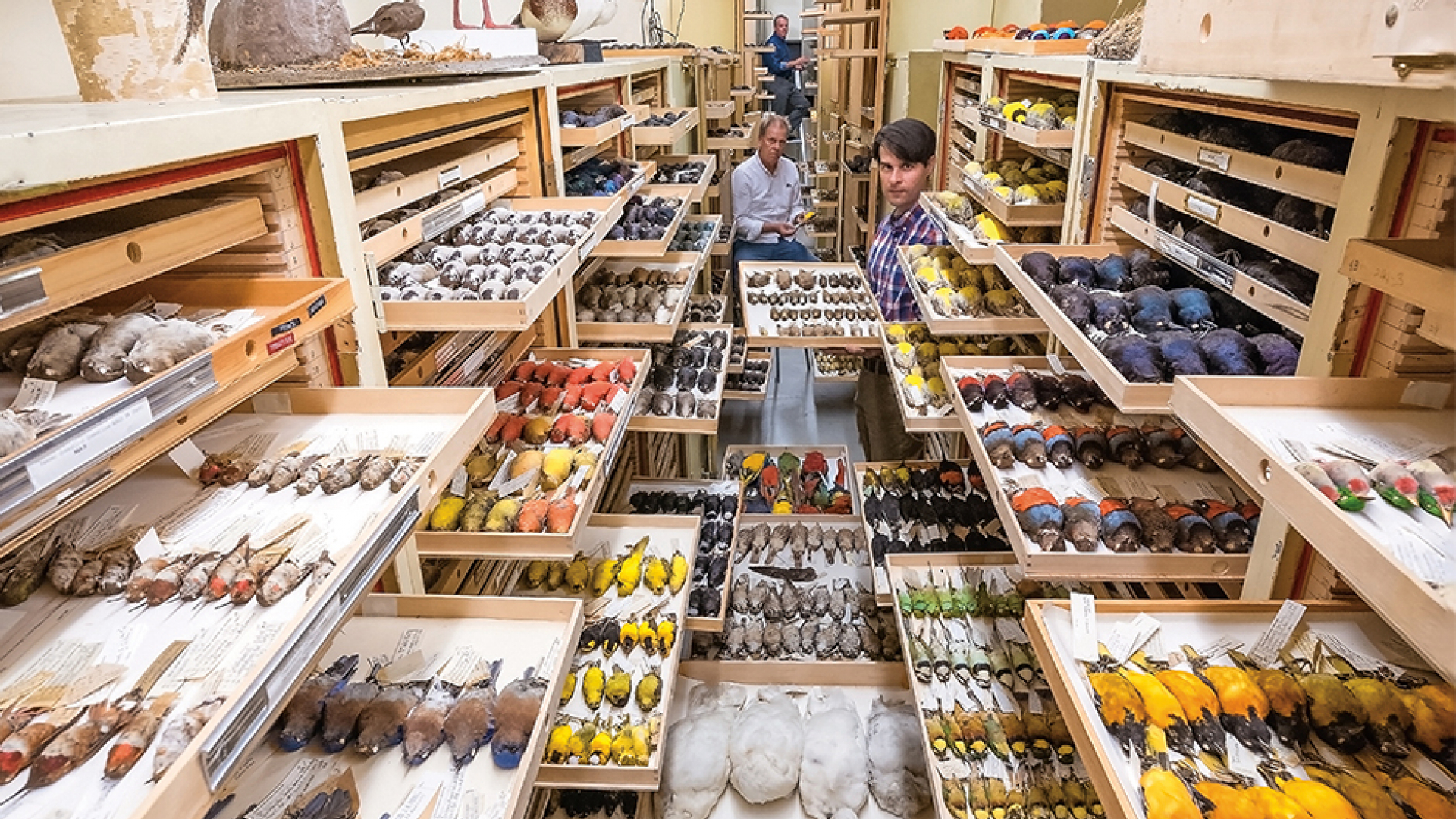How the ROM’s extensive Ornithology collection is crucial to understanding bird diversity and evolution
Birds are the most diverse group of terrestrial vertebrates. They are not only an integral part of our natural ecosystems but also important for our well-being. Birds are prominent in recreation, art, and science, and enrich our environment with their widespread presence, their appearance, sounds, and behaviours. Sadly, bird populations are declining everywhere, and too many species are at risk of extinction. We are destroying their habitats, contaminating their food, and introducing animals, such as cats, that prey on them. Documenting and permanently archiving samples of current avian populations have never been so critically important. That is one of the purposes of the ROM Ornithology collection.
Our Ornithology collection stands out as the largest research collection of birds in Canada and one of the largest and most complete in the world. The 164,603 specimens coming from all corners of the globe represent 58 percent of the planet’s bird species diversity.
The ROM’s Ornithology collection constitutes a fabulous resource for understanding the past, present, and future of avian diversity.
“ ”From the massive ostrich to tiny hummingbirds, all major bird groups are represented. The collection holds numerous specimens of species that are already extinct, including the largest collection of passenger pigeons in the world, Carolina parakeets, and spectacular taxidermies of the Labrador duck and the great auk. The oldest specimen is a rusty blackbird collected on April 4, 1800, near London, Ontario. Specimens are actively used by researchers, artists, and educators from Canada and abroad.
Avian research at the ROM focuses on understanding how bird diversity has evolved. We use the collection of bird skeletons for interpreting and classifying fossil remains that provide the temporal scale of evolution.
We also use DNA from the tissue collection for estimating the degree of relatedness among extant species. Finally, we use traditional study skins to gather information about factors that may affect how birds evolve and diversify. For example, we are studying aspects of the wing’s morphology that control flight efficiency. Flight efficiency influences speciation because populations with low flight efficiency become isolated more easily, thus initiating the formation of new species.
In addition, flight efficiency may influence the risk of extinction because species with low flight efficiency may be more affected by habitat fragmentation and climate change. The ability to assess flight efficiency from museum specimens can also help identify extant species that may be more vulnerable to current levels of habitat fragmentation and climate change.
Bird specimens can be used not only for studying how birds evolved but also for assessing their current risk of extinction. Due to the number and variety of specimens it holds, the ROM’s Ornithology collection constitutes a fabulous resource for understanding the past, present, and future of avian diversity.

